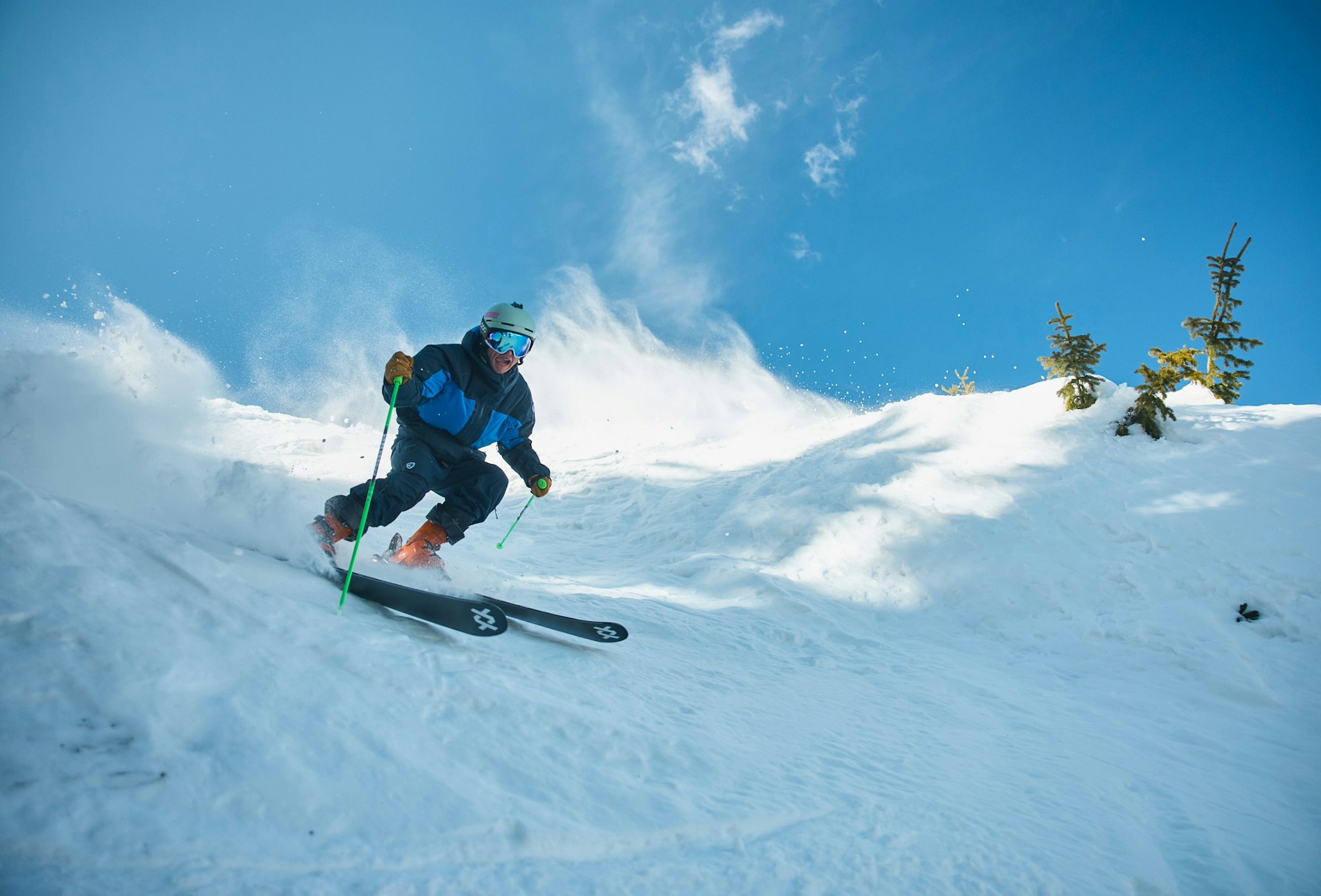These two pieces of wood, carbon and metal are the lifeblood of the skiing experience. They’re the only reason we can effectively slide on frozen water. Over the decades, skis have become quite nuanced in shape, size and personality. Before you dive into the ski section, here is a list of the basic principles of ski design so we’re all on the same page.
Waist Width
Begin by selecting an appropriate waist width for the terrain you'll be skiing most often. As a general guideline: 75–95 mm for park, pipe and most East Coast skiing; 95–104 mm for all-mountain; 105–115 mm for big-mountain lines; and 115 mm or wider for powder hunting. That's not to say you can't ski a 100 mm ski in the park or that you won’t have a blast crushing powder with a 107 mm waist, but these widths offer a solid baseline.
Sidecut
The curvature of a ski’s edge from tip to tail is its sidecut. Traditional sidecuts boast an hourglass shape, which boosts edge contact with the snow and is ideal for skiers looking to carve deep into hardpack. This measurement directly affects how the ski turns. Those who prefer quick, sharp turns would do well with a more pronounced curve from the narrowest point of the ski (the waist) through the tip and tail. Those who enjoy long, drawn-out turns might favor a more shallow sidecut. Some skis feature mid-range sidecuts for a hybrid feel. On others, you’ll find a reverse sidecut—these skis excel in deep snow. A reverse sidecut has less edge contact with the snow, which means the ski pivots more easily.
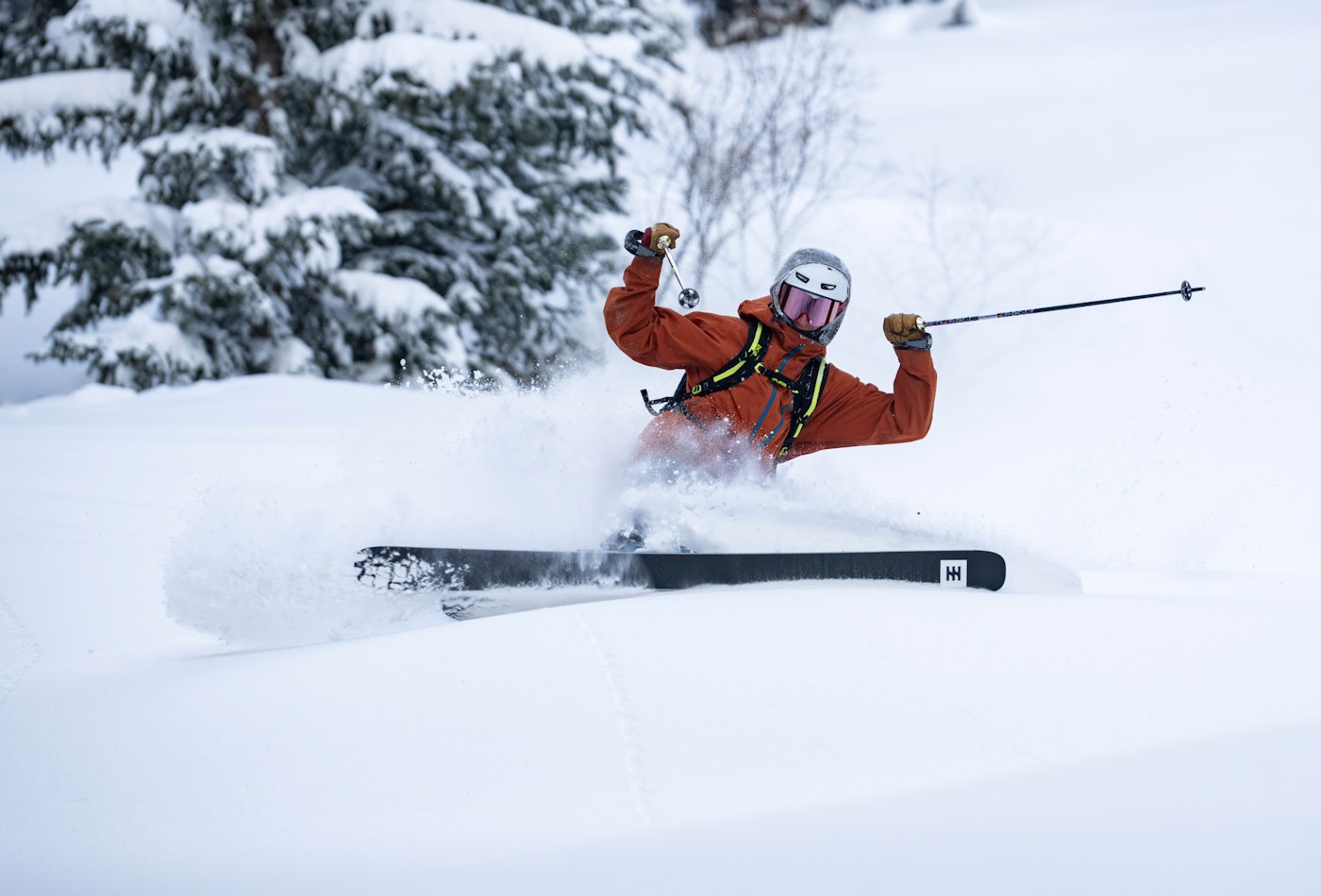
Image: Gabe Rovick
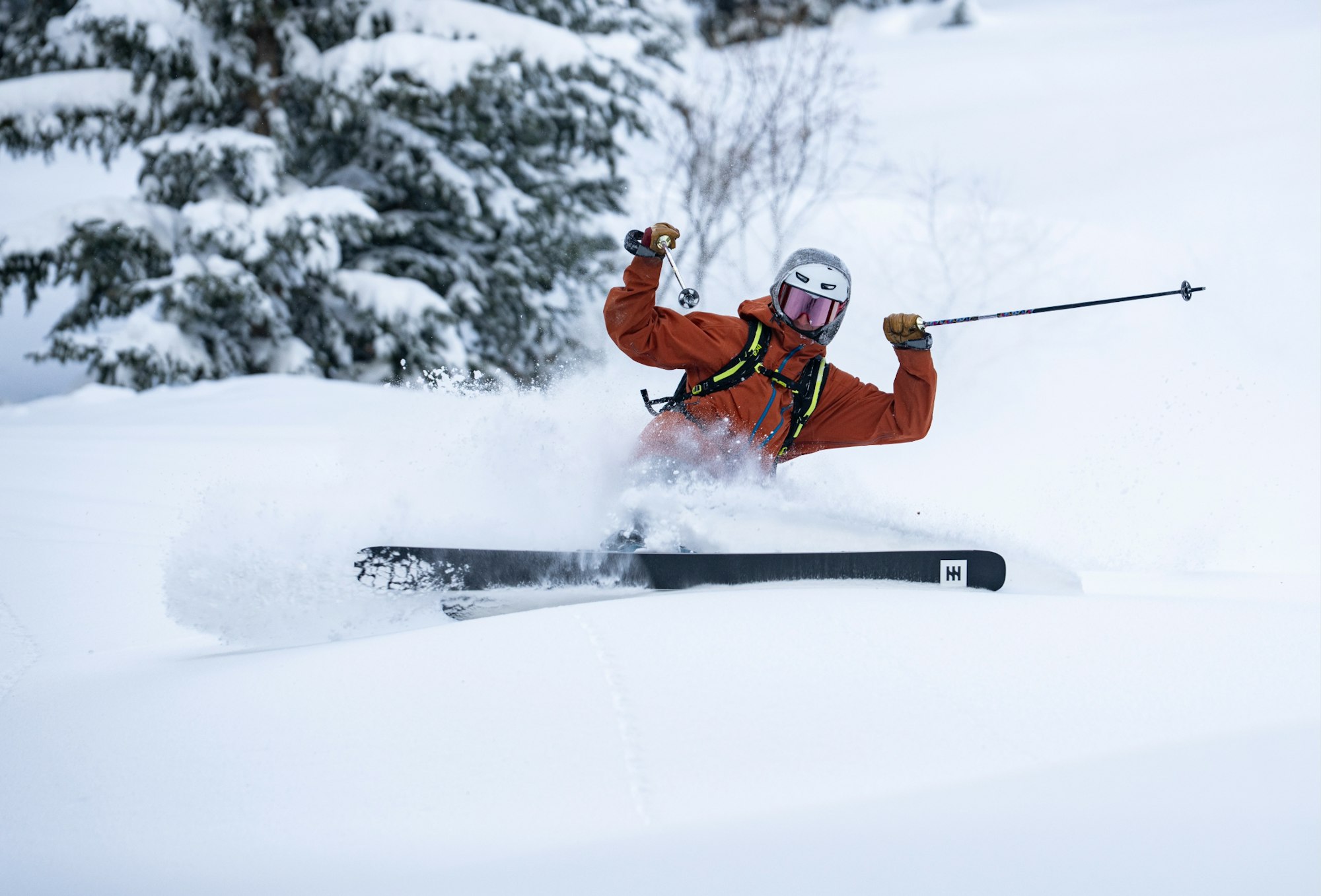
Image: Gabe Rovick
Ski Types
Directional skis typically feature a wide tip and a narrower, flatter tail. These skis are designed for skiing in one direction and traditionally appeal to skiers who are focused on carving and smooth turn transitions rather than freestyle and creative endeavors. A great example of this ski type is the Völkl M7 Mantra.
Directional freeride skis split the difference between rockered twin skis and directional skis, offering a slightly more symmetrical profile while retaining a wider tip than tail. These skis work well for all-mountain skiers who want versatility without fully committing to a freestyle-focused ride. A great example is the Blizzard Rustler 10.
Twin tip skis feature identical tip and tail profiles, which means you can ride them in either direction, forward or switch. These skis feature a substantial amount of tip and tail rocker, which enables easy pivots, butters, slashes and turn releases. While most sacrifice some of the charging power and stability of directional skis, twin tips excel in the terrain park, powder and anywhere your creativity takes you.
Turn Radius
If you were to ski a perfect circle around a center point using several different ski models, you’d create circles of varying sizes. The radius measurement used to distinguish the size of the circle is defined as the distance from the center of the circle to the edge. The bigger the radius, the larger the circle and vice versa. The ski’s radius indicates the way it behaves on the mountain.
To put it plainly, a ski’s sidecut and stiffness determine the size of this circle. A short turn radius is derived from a deep sidecut combined with softer construction materials (e.g., poplar and paulownia). Larger turn radii are a product of less sidecut and stiffer materials (e.g., ash and metal). Skis with a smaller turn radius, 16 meters and below, carve quick and snappy turns. Those in the 17–22 meter range are geared toward varying terrain across the mountain. On the higher end, a radius of 22 meters and above is best suited for arcing huge turns down steep faces or wide groomers.
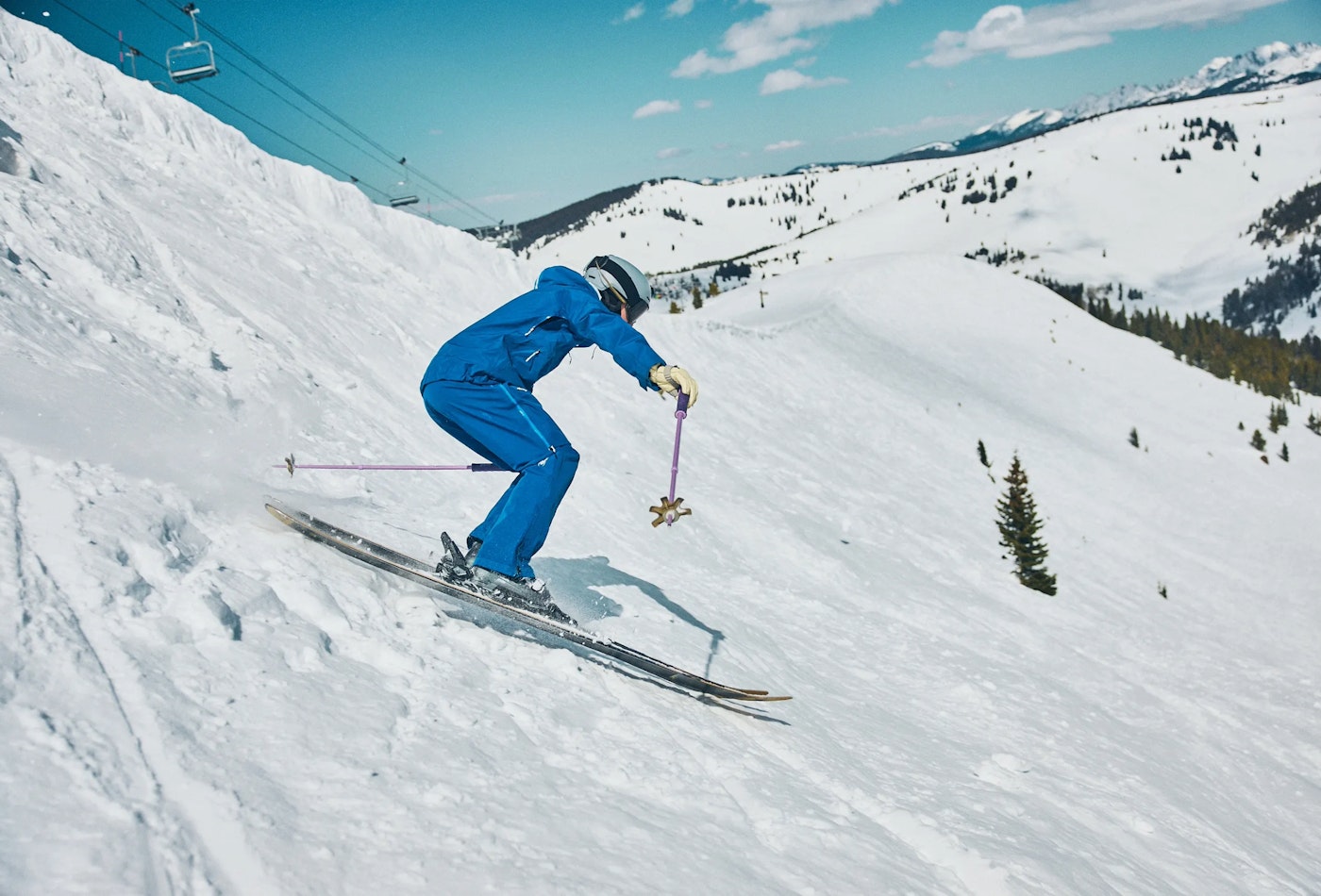
Image: Andrew Maguire
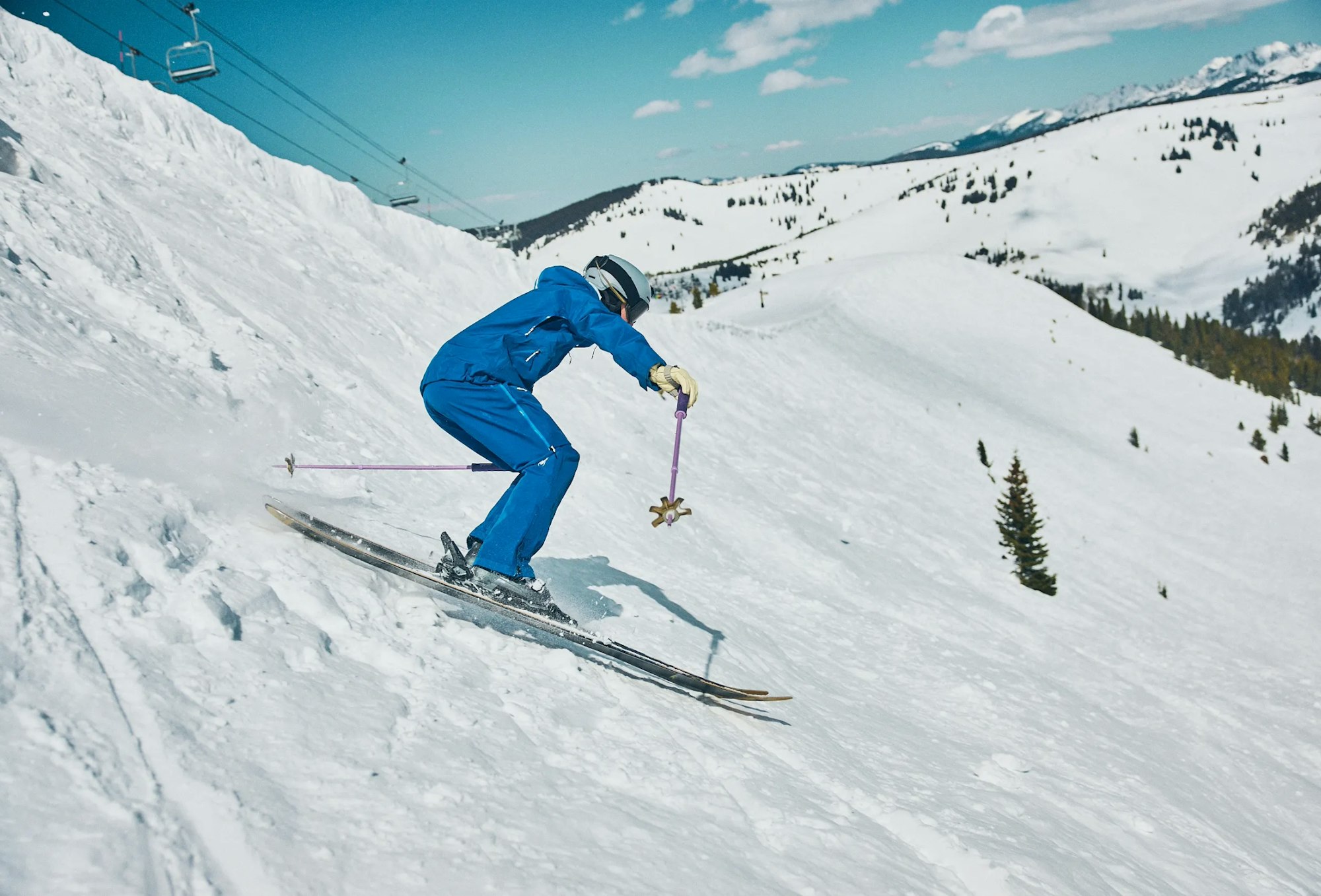
Image: Andrew Maguire
Torsional Rigidity
This term is a bit confusing but is used a lot in the ski world. Essentially, it’s the amount of resistance a ski has against twisting. A ski that boasts adequate rigidity will hang strong during full-steam, forceful carving down the mountain, ensuring edge hold throughout your turns.
Rocker and Camber Profiles
Traditional Camber: A ski with traditional camber has a slight upward curve. The ski makes full edge contact with the snow when a turn is initiated by a skier’s weight, resulting in impressive power transmission throughout the turn.
Reverse Camber: Also known as rockered, this profile yields less edge contact with the snow, which enables the operator to easily pivot, smear and surf the mountain. Early rise rocker in the tip, whether pronounced or gradual, aids in turn initiation and flotation through deep snow.
Hybrid: The most common profile on the freeski market today, hybrids generally feature early rise rocker in the tip and/or tail, with traditional camber underfoot. The hybrid profile combines the playful, maneuverable, floaty nature of rocker with the power transmission and edge control of camber—a win-win situation.
Taper
Reduced width in the tip or tail of a ski is referred to as taper. Because rockered skis generally have a shortened effective edge, they’re often built with tapered extremities. Tapering helps avoid hooking in deep snow.
Core Construction
If you want to know how a ski will behave on snow, the core plays a role equally as important as the shape. The essential ingredient in any ski is wood. On one end of the spectrum, woods like paulownia are incredibly lightweight but don’t dampen vibrations very well. In the middle, species like bamboo, aspen and poplar balance weight and vibration damping while still creating pop. On the firmer end, woods like fir, ash, maple and beech are dense and thick, ensuring torsional rigidity, stability and power—but they also require more effort to maneuver.
Ski cores can be meticulously shaped and tapered in thickness from tip to tail, which really affects performance. A ski with a more dramatic taper to the tip and tail has less material present, creating softer, more buttery extremities. A less dramatic taper leaves more material, providing more stability and less flex.
While wood is the main ingredient, manufacturers bond various materials to the wood core to fine-tune performance:
Metal: Titanal, a titanium-aluminum alloy, is used to add stability, energy, damping and torsional rigidity. Skis with Titanal tend to be damp and very stable at high speeds.
Fiberglass: A stiff yet elastic sheet epoxied around the core, fiberglass makes up 50–80% of a ski’s stiffness. It provides great pop and is more affordable than carbon or Titanal, which is why manufacturers love it.
Carbon Fiber: With an impressive strength-to-weight ratio, carbon is favored by backcountry ski manufacturers but is also used in alpine skis to add rigidity and pop without the weight of metal. It comes with a higher price tag, so it’s typically implemented in selective locations.

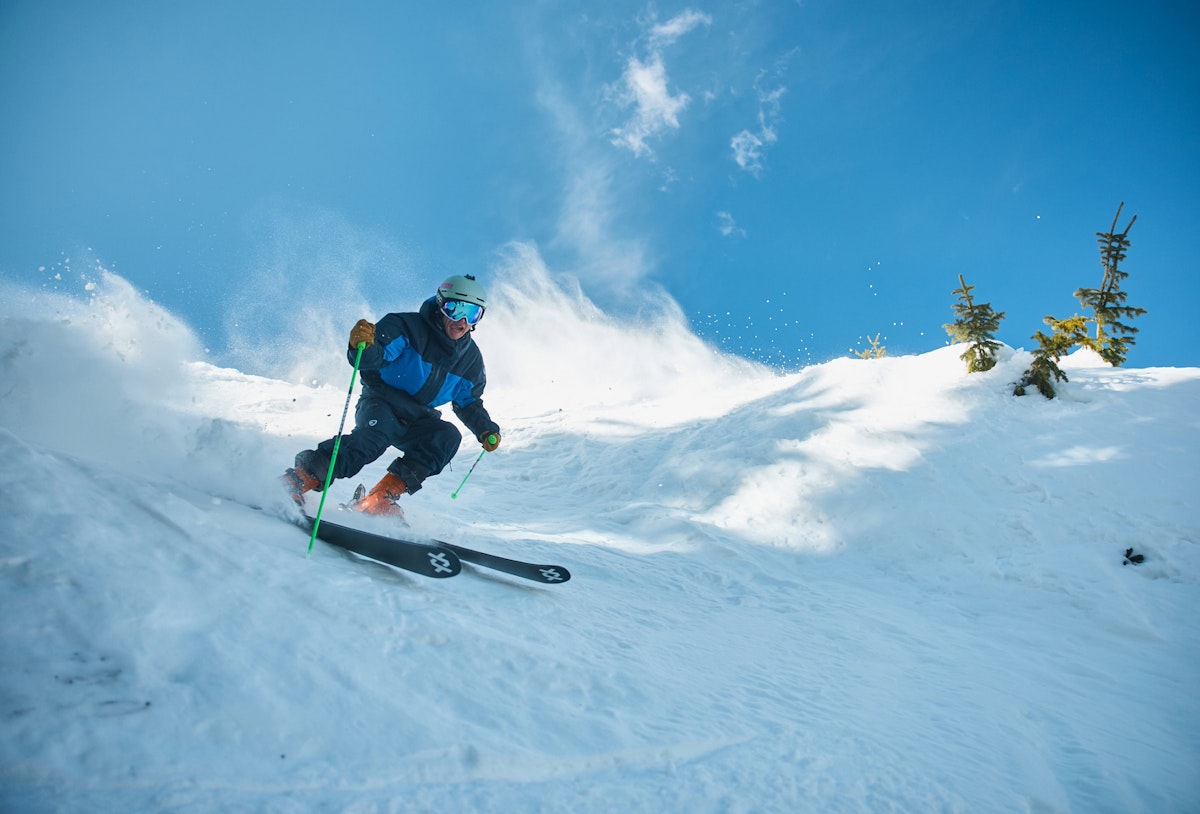

![[GIVEAWAY] Win a Head-to-Toe Ski Setup from IFSA](https://www.datocms-assets.com/163516/1765920344-ifsa.jpg?w=200&h=200&fit=crop)


![[GIVEAWAY] Win a Legendary Ski Trip with Icelantic's Road to the Rocks](https://www.datocms-assets.com/163516/1765233064-r2r26_freeskier_leaderboard1.jpg?auto=format&w=400&h=300&fit=crop&crop=faces,entropy)




![[GIVEAWAY] Win a Head-to-Toe Ski Setup from IFSA](https://www.datocms-assets.com/163516/1765920344-ifsa.jpg?auto=format&w=400&h=300&fit=crop&crop=faces,entropy)


